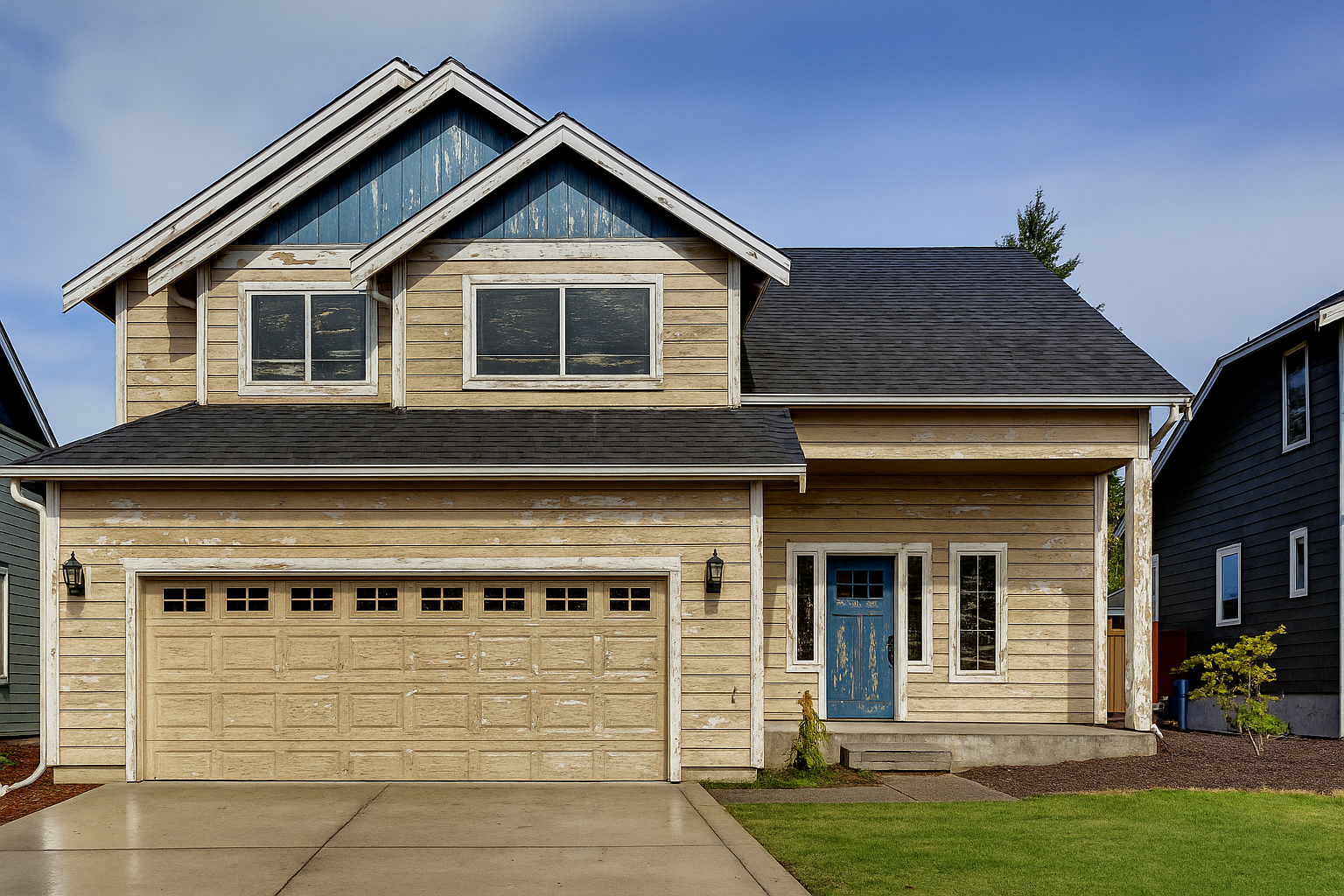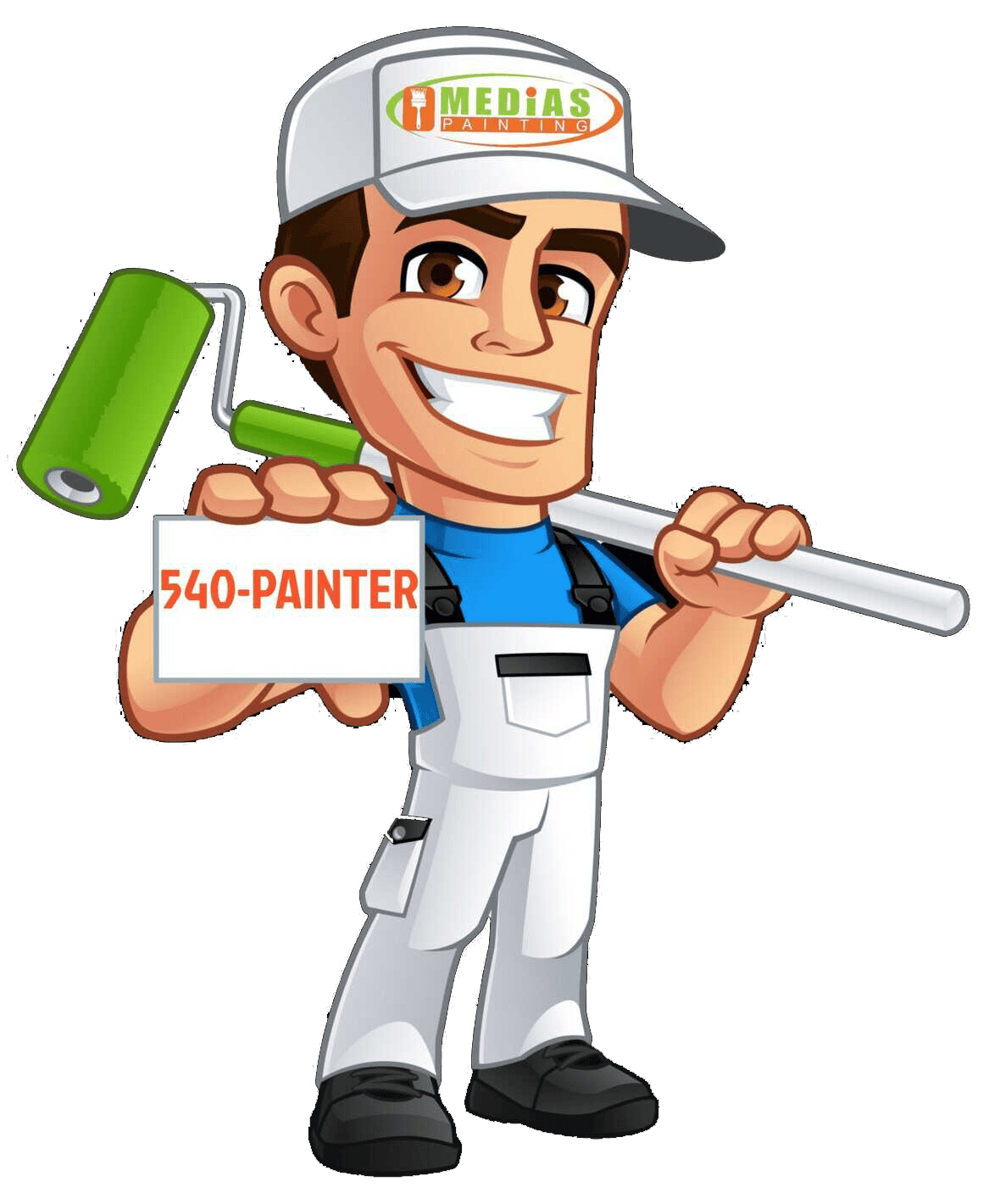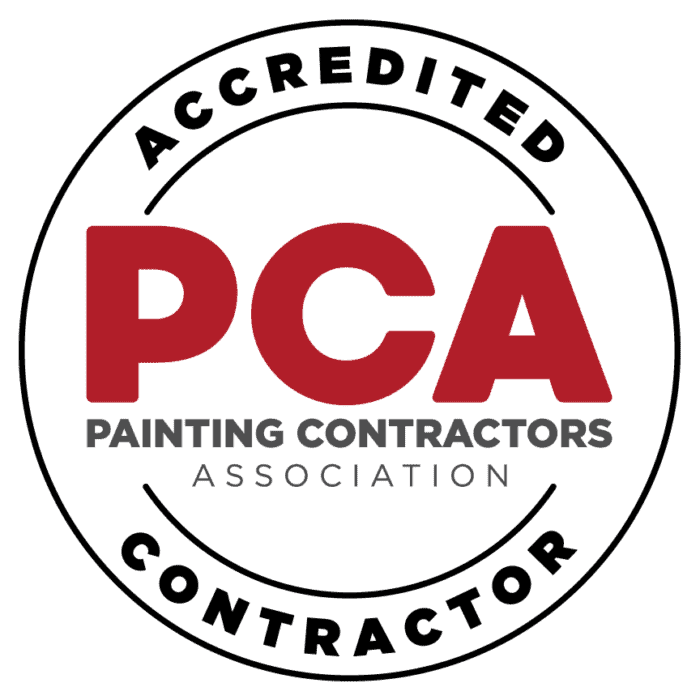Chipped paint on walls, trim, or exterior siding can make an otherwise beautiful home look neglected. More than appearance, it can also expose surfaces like wood, drywall, or plaster to water, dust, and rust. That’s why knowing how to repair chipped paint is a must for homeowners in Stafford, VA.
Unlike small scuffs or scratches, chipped paint often points to deeper issues — moisture leaks, poor surface preparation, or even lead paint in older homes. Fixing it the right way protects your home and keeps it looking fresh.
Key Takeaways:
- Chipped paint is more than cosmetic — it can expose drywall, wood, and trim to water damage and rust if left untreated.
- Proper repair involves scraping, sanding, filling with spackling paste or wood putty, priming, and repainting.
- Professional painters in Stafford, VA use high-quality primers, enamel paint, and tools for lasting results.
- Lead paint in older homes should only be handled by trained professionals to prevent health risks.
- Repairing chips early is more affordable than full replacement and keeps your home looking sharp.
Why Paint Chips in the First Place
Before you can figure out how to repair chipped paint, it helps to know what caused it. Common culprits include:
- Moisture or leaks: Water behind walls, around windows, or near bathrooms can break the bond between primer and paint.
- Dust or poor prep: If surfaces weren’t properly cleaned or primed, the paint can peel or flake early.
- Heat and pressure: Kitchen walls, trim near heaters, or areas exposed to direct sun often chip faster.
- Aging materials: Wood trim, drywall seams, or old enamel paint can naturally degrade over time.
Chips are more than cosmetic. Left untreated, they can spread into larger peeling areas.
Tools and Materials Used to Repair Chipped Paint
The process of repairing chipped paint isn’t about grabbing any old brush and spraying paint over the damage. It takes the right tools and preparation. Here’s what professionals typically use:
Tools:
- Putty knife or razor scraper
- Wire brush
- Sandpaper (fine grit) or sanding block
- Paintbrush
- Masking tape
- Scraper and polishing tools
Materials:
- Spackling paste or joint compound
- Wood putty for trim or exterior wood repairs
- Primer (often two coats of primer for best coverage)
- Latex or enamel paint depending on surface
- Adhesive fillers for stubborn cracks
- Plastic sheeting or drop cloth to protect floors
Each material plays a role. For example, spackling paste smooths out chipped drywall, while wood putty is tougher for baseboards or window trim. And primer isn’t optional — it helps repaired areas absorb paint evenly.
How to Repair Chipped Paint?
Step 1: Removing Loose Paint
The first step in how to repair chipped paint is cleaning up the area. Professionals use a scraper, wire brush, or even a razor blade to carefully remove loose fragments. This prevents paint edges from lifting later.
A light sanding follows to smooth the transition between the chipped area and the intact wall or trim. Skipping this part is one of the biggest painting mistakes homeowners make.
Step 2: Filling and Patching
Once the surface is clean, the damaged spot gets filled. For drywall and interior walls, spackling paste or joint compound works best. For wood trim or exterior siding, wood putty or exterior acrylic filler is stronger.
The material is applied slightly higher than the surface. After drying, sanding brings it flush with the wall or trim. Professionals know that patience here pays off — too much filler or rushing the dry time leads to lumps and uneven paint.
Step 3: Sanding for a Smooth Finish
Sanding may seem repetitive, but it’s the difference between a patch that blends and one that stands out. Fine-grit sandpaper, used with steady pressure, evens out the repaired area. Dust is wiped away with a microfiber cloth or damp paper towel before moving forward.
This step also helps primer and paint stick properly, reducing the chances of more chips in the future.
Step 4: Priming the Surface
Freshly repaired areas absorb paint differently than the rest of the wall or trim. That’s why primer is necessary. A professional painter often applies two thin coats of primer for full coverage, letting each coat dry completely.
Skipping primer leads to flashing — a visible patch even after painting. It’s the reason why homeowners in Stafford often rely on professional painters in Stafford, VA instead of trying a quick fix that doesn’t last.
Step 5: Applying Paint
Finally, the paint goes on. Depending on the surface, professionals may use a brush, roller, or even spray paint for even coverage.
- For house interiors: Latex paint works well for walls, trim, and ceilings.
- For bathrooms or kitchens: Waterproofing paints or enamel paint add extra protection against moisture and heat.
- For house exteriors: Durable coatings resist UV damage, rain, and temperature swings.
Applying paint isn’t about one thick coat. Multiple light layers create a finish that blends seamlessly with surrounding walls, trim, or siding.
Safety Concerns with Lead Paint
Homes built before 1978 often have lead paint. Sanding or scraping it creates harmful dust that can affect children and adults. If lead is suspected, professional remediation is the only safe option. Local contractors trained in lead paint handling follow strict guidelines to protect your family.
Common Questions About Chipped Paint
How do you fix chipped paint on a wall?
By scraping away loose paint, filling the area with spackling paste, sanding smooth, priming, and repainting.
How do you fix peeling paint?
Peeling paint often covers larger areas than chips. The process is similar but usually involves removing more paint before repairs.
How much to fix chipped paint on a wall or trim?
Costs vary depending on damage size, materials, and whether water leaks or rust caused the issue. Repairs are always more affordable than full replacement, but only when done correctly.
Protecting Your Home With Lasting Paint Repairs
Learning how to repair chipped paint shows why the right process matters. From removing loose edges to sanding, priming, and painting, each step builds on the last. Skipping one often means repeating the job sooner than you’d like.
Hiring professionals means the work goes beyond patching what you see. Experienced painters check for leaks, rust, and other hidden causes. They use commercial-grade primers, paintbrushes, and tools that deliver longer-lasting results.
Chipped paint can also be a sign of bigger issues. Our team looks for moisture intrusion, heat damage, or weak adhesives that could mean it’s time for larger repairs. In some cases, we may recommend a full repaint if the surface shows several signs to repaint your house exterior instead of spot repairs.
If you need professional painters in Stafford, VA, our team is here to help with chipped paint repairs, repainting projects, and complete home improvements. We proudly serve Lorton, Dumfries, Manassas, VA and the surrounding areas.
Call us today at 540-210-1363″>540-210-1363 for your FREE estimate and let us bring your home back to life.








